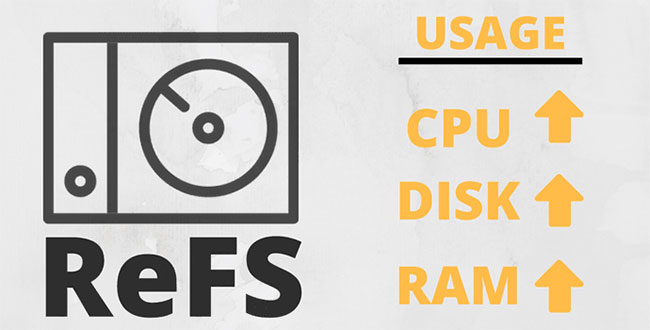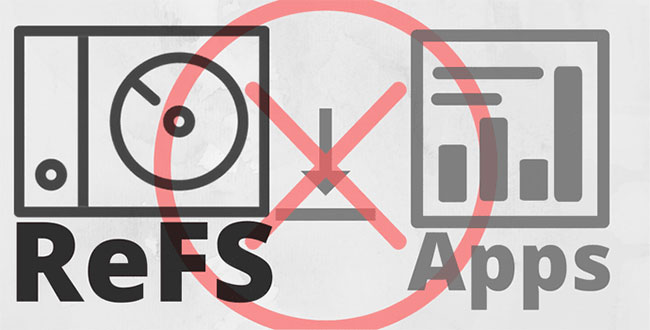Why ReFS is not commonly used on Windows 10?
Out of all the features and improvements received by Windows 10 Pro for Workstations, ReFS is the most prominent. Microsoft currently disables the ability to create new ReFS partitions in all versions except Workstation. Let's take a look at the top 5 reasons why ReFS is not yet commonly used on Windows 10.
1. Unable to install the operating system on the ReFS partition
The first drawback of ReFS is that it does not support the installation of any operating system, even Windows Server editions. ReFS currently serves data storage purposes only. Windows or Linux cannot determine if a ReFS drive is bootable.
 Unable to install the operating system on the ReFS partition
Unable to install the operating system on the ReFS partition 2. Limited compression and encryption support
In the current version, ReFS does not support file-level encryption and compression and it does not support Windows Bitlocker very well, as opposed to NTFS which is fully compatible.
For a person with a large amount of data, compression is an important feature. Similarly, encryption is also important in protecting sensitive data.
 Support for compression and encryption is limited
Support for compression and encryption is limited 3. Performance limitations
Unlike NTFS, ReFS consumes more system resources and has more impact on the drive's IOP. In a server environment, this is not a problem, but on a normal PC this may affect usage.
The larger the ReFS drive's array, the more RAM it will use, the processor cycle and the IOP drive to check the integrity of the file.
 ReFS consumes a lot of system resources
ReFS consumes a lot of system resources 4. Can not install the application
Like the operating system in the first reason, ReFS drives do not support the installation of any applications or programs. The reason behind this is the lack of hard link support in ReFS.
Very few programs are allowed to be installed on a ReFS drive, and even programs that can be installed have trouble running.
 ReFS does not support the installation of any applications or programs
ReFS does not support the installation of any applications or programs 5. Profit
The last reason is not related to technology but mainly to business strategy. Like Windows 10 S that only comes pre-installed on Surface laptops, Microsoft wants to force users to upgrade from Pro to Pro Workstation with this tactic to increase sales.
Although optimizing the operating system for server hardware is a big and expensive task, disabling the features available in a version is certainly not very user friendly.
What to do if there is a ReFS drive?
If you already have a drive or VHD in ReFS format, your data won't go anywhere. Microsoft only disabled the ability to create new ReFS drives and you can still access ReFS drives. Also, this restriction will only take effect with the Fall Creator Update, so you can still create ReFS partitions.
You should read it
- How to format a drive with ReFS in Windows 10
- Learn about Resilient File System in Windows Server 2012
- How to enable / disable TRIM support for SSDs in Windows 10
- This is the most commonly used version of Windows 10 in the world
- Windows 7 overcomes XP to become the most popular OS
- 10 tricks with Windows XP
 How to install Visual Studio Code on Windows 10
How to install Visual Studio Code on Windows 10 How to pin text and images to the Windows 10 Clipboard History
How to pin text and images to the Windows 10 Clipboard History How to change the text size for the title bar in Windows 10
How to change the text size for the title bar in Windows 10 How to change the value of HungAppTimeout in Windows 10
How to change the value of HungAppTimeout in Windows 10 The Windows 10 2004 version support page is actually working
The Windows 10 2004 version support page is actually working How to add exceptions in Windows Defender on Windows 10
How to add exceptions in Windows Defender on Windows 10